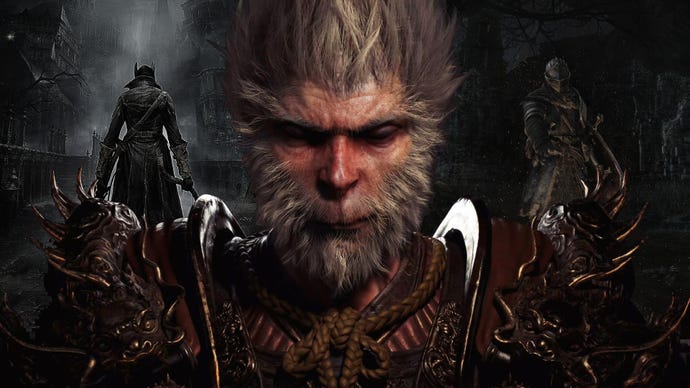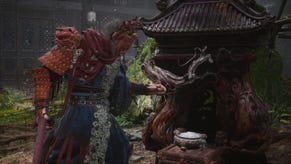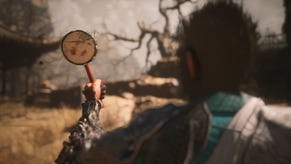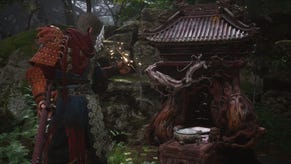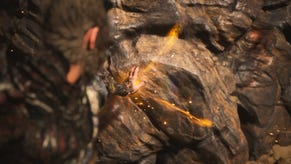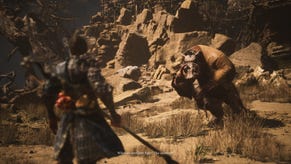Black Myth WuKong may not be a Soulslike, but there are still plenty of ‘Miyazaki moments’, don’t worry
Poison swamps, bosses with upsetting multiple health bars, mimics that batter you when you interact with ‘em – Black Myth WuKong has it all.
Earlier this summer, I had the chance to play Black Myth Wukong, a highly-anticipated indie action game from China that has impressed everyone since its first reveal, and been teasing us all with its unique – and gorgeous – gameplay since 2020.
It’s been cooking for a while now, and all the trailers that developer GameScience has released for it just keep getting better and better. But we don’t really know an awful lot about the game at the moment; there was an assumption that it’s a Soulslike thanks to the combat we’ve seen in videos so far, but after getting my paws on it, I can tell you one thing for certain: it isn’t.
For a start, the devs themselves call the Unreal 5-based game an ‘action-RPG’, more generic than Soulslike, and missing some of the key tenats that FromSoft have baked into the genre since establishing it back with Dark Souls. So what’s the difference, really?
First, you don’t have the depth of build-crafting you do in FromSoft games – progression is instead limited to a couple of basic skill trees that allow you to amplify the damage you can do in each of your three main combat disciplines (which can be divined into striking, poking, and ‘hopping’ if you want to boil them down to their simplest functions).

Next, the story. It’s much more ‘what you see is what you get’ here, none of that text-based lore-diving you need to do in the item descriptions, a la Elden Ring or Bloodborne. Wukong is heavily based on the Chinese novel, Journey to the West, and we follow the eponymous Sun Wukong as he battles tonnes of bosses inspired by the 16thC text (if you’ve got even a passing familiarity with either Enslaved: Odyssey to the West or Dragon Ball, a lot of this will be obvious).
Finally, there’s game difficulty: the developer is intentionally making it a bit more accessible than the Souls games, giving you the power to transform into deadly mytholgocial beasts in order to help you batter the bosses. There’s no difficulty select, but in my hands on, shape-shifting into a blazing tiger definitely trivialised some of the harder encounters – something the developer told me it wants players to do if they end up slamming their head against an encounter for more than a few attempts.
These transformations come with their own life bar, offering a reprieve from long boss fights and giving you breathing space to chip away at your enemies without fear of going overboard and getting countered, and killed. I like this; the game has a focus on aggression – you can’t even block until much later in the game – and the result is a combat system that feels much more fluid and ‘dancerly’ than the fat-rolling you get in Souls titles. Your mileage may vary, but I really appreciated the fast-paced, acrobatic combat. It put me in mind more of Ninja Gaiden or Devil May Cry than it did Demon’s Souls.

So, back to that headline. What are the similarities between this game and the Souls titles? Well, first of all, there are the foundational mechanics that underpin everything the game is: shrines that respawn enemies and act as checkpoints, a little sippy cup you need to sip from to refill health, the loss of experience when you die, a stamina bar that drains when you dodge, attack, and (eventually) guard.
But the similarities go deeper than that. There are some design elements that made me squeak with delight when I was fighting through my three-hour demo. Design choices like unassuming bosses that fall with a fair amount of ease, but then spring back to life in a new form, and with a whole new health bar. They sucker punch you into a false sense of security, then take advantage of your dented life bar and kill you as you try to suck the last remaining charge from your definitely-not-an-Estus Flask.
Or there’s the poison swamp. Yes, sorry to tell you, but there’s a poison swamp. My demo was from the early game – perhaps four or five hours in, I think – and already the game starts throwing status afflictions at you, and of course one comes in the form of a horrible stinky bog that saps your health. It’s implemented well; a warning zone if you get bullied out of a safe combat area that’ll chip your health unless you can scavenge herbs to heal your malaise. It’s not just plopped in for the sake of it; it fits the world, plasters on another level of warniess as you navigate the fairly linear level.
And – if you survive the swamp – you’ll find some interactable items that you think ‘ah, cool, these will help heal me and recover the health I lost to poison!’. Nah. They’re mimics. Get tricked, idiot. I should have been raging at these quite simple enemies that killed me, but I was too busy grinning. Again, they’re places just-so, designed to combat carelessness (or, perhaps, arrogance). I was put back to the checkpoint for my chagrin, close to the boss, and it was all my fault. A proper ‘Miyazaki moment’ that I was thrilled to have fallen victim to.
.jpg?width=690&quality=70&format=jpg&auto=webp)
So, Black Myth Wukong is not a Soulslike. Good. It’s more of a boss rush, something that – to me – feels more like a game at the intersection of Ninja Gaiden and Nioh than it does Dark Souls and Bloodborne. There are mega bosses tucked away in the margins (more on that in another article) and there is challenge for you if you want to pursue it, but the gooey center of the game is a sweet, well-balanced boss rush, padded out with gorgeous levels that teach you the intricacies of its acrobatic combat.
This game is going to be good; a solid action-RPG entry for people that like the Souls games, that perhaps want to decompress a bit after the intensity of Shadow of the Erdtree. Its timing is killer, and it’s got the chops to back it up. Keep your eyes on Wukong, folks, it’s got everything it needs to be one of 2024’s most surprising releases.
Black Myth Wukong comes to PlayStation 5 and PC on August 20, 2024, with an Xbox Series X/S release coming at a later date.
